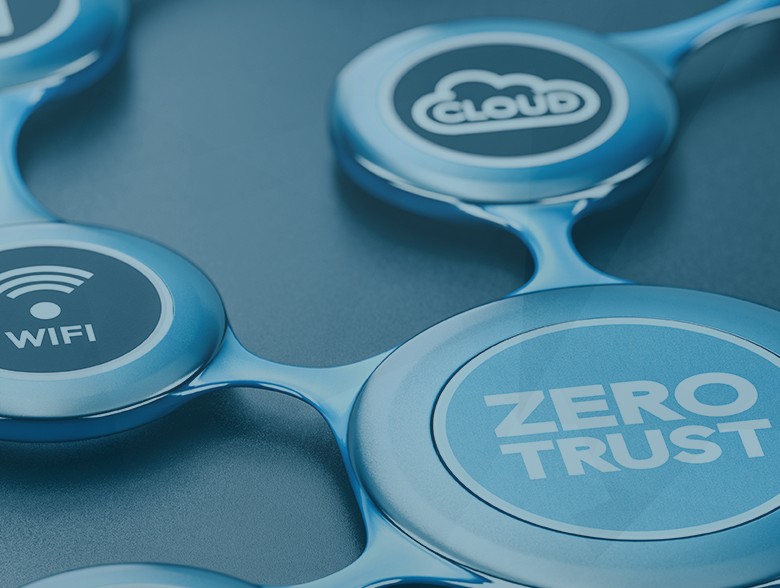By Elena Thomas, Digital Marketing Manager, SafeAeon Inc.
Gone are the days when network security resembled a medieval castle. It was protected by a robust drawbridge and moat. In our modern realm, we have virtualization, cloud computing, and nomadic remote workers. This has shifted the location of our metaphorical moat. It’s important to note that the moat might not shield us from traitors inside our castle walls.
Enter protectors: Zero Trust Network Access (ZTNA) and Secure Access Service Edge (SASE). These two modern-day knights are gaining traction fast. Organizations are looking to them to fortify their growing remote workforces from potential threats.
Where remote work is now common, security teams face a vast array of endpoints. They find themselves navigating an ever-expanding terrain daily. Each day brings new challenges in protecting a sprawling virtual landscape. In response, many organizations are revamping their processes and technology. They’re opting for the strongholds provided by a zero-trust approach. To add more flexibility and security, businesses are turning to Secure Access Service Edge (SASE).
A recent study commissioned by IBM and conducted by Forrester Consulting revealed a trend. A whopping 78% of respondents are considering or planning to adopt SASE within the next year. So, what is SASE, and how does it connect with zero trust? Let’s explore that!
So, what exactly SASE is, and how does it intertwine with the zero-trust method? Let’s dive in!
What’s Zero Trust?
Zero Trust is a guiding principle in cybersecurity. It advocates for no implicit trust. In network architectures, this is crucial. It refuses automatic access to resources based on network location. This deviates from older models that permit access to devices on the same network.
Consider VPNs. Usually, remote users gain broad access to a network. This poses a massive security risk. Zero Trust combats this. It replaces network-focused access control with stringent authentication and authorization software. This software lets administrators set access rules for different user groups. These rules are enforced regardless of location.
Data, services, and workflows are shielded by software-defined micro-segmentation. This is instead of rigid network segmentation. A zero-trust architecture ensures strict user authentication. It considers factors like user identity, location, and required service when granting access.
This approach follows a “never trust, always verify” mantra. It blocks inappropriate access instantly. For this, Zero Trust requires a clear view and control over network traffic. It must monitor traffic sent through all parts of the environment.
While integrating Zero Trust requires effort, the payoff is significant. It simplifies network structures. It offers more flexibility for users and application deployment.
What’s SASE?
SASE or Secure Access Service Edge, is Gartner’s answer to security challenges. These challenges are posed by remote work and cloud-based applications. It combines essential networking and security services into a comprehensive solution.
This solution includes FWaaS (Firewall as a Service), DLP (Data Loss Prevention), ZTNA (Zero Trust Network Access), secure web gateways, and CASB (Cloud Access Security Broker). In essence, SASE is business networking and security on a single platform. It provides a holistic security architecture for data centers, branches, cloud resources, third-party apps, and mobile devices.
For businesses navigating the complexities of remote or hybrid work, SASE is attractive. SASE providers offer cloud security solutions with application-level security. Zero Trust is at the heart of SASE. Constant checks for authentication and authorization are in place. This ensures tight security for users and applications, wherever they are in the world.
Why it’s Not ZTNA vs. SASE, but ZTNA and SASE?
When it comes to network security, ZTNA and SASE share a harmonious collaboration. They are not in competition but work together for enhanced security. SASE serves as the overarching philosophy, with ZTNA as one of its integral components.
The journey to zero-trust implementation is a short- to medium-term objective. On the other hand, adopting the SASE model is a more long-term goal. When an organization decides to embrace SASE, it’s setting itself on a gradual path. This path involves revamping its network and network security frameworks. It’s not an overnight transformation. The process includes phasing out obsolete security technologies and seamlessly integrating the remaining ones. Choosing a SASE model requires a zero-trust approach to cybersecurity.
Today’s cybersecurity experts must pay close attention to both zero trust and SASE. They should integrate these trends into future architectural decisions. In the short term, organizations should adopt zero-trust principles for better security. This will secure remote workforces accessing cloud-based and on-premises services. At the same time, they should view new networking projects through a SASE-compatible lens.
What Perks Customers Seek in Combination of ZTNA and SASE Solutions?
Customers can enjoy a variety of benefits by combining (ZTNA) and (SASE) solutions.
Stronger security:
ZTNA and SASE can significantly improve an organization’s security posture. They achieve this by reducing the attack surface and preventing unauthorized access. Moreover, they effectively detect and block threats. ZTNA operates on a “never trust, always verify” approach to security. This means every user and device must go through authentication and authorization before accessing network resources. Complementing this, SASE provides a unified security platform that guards against a wide range of threats including malware, phishing, and data breaches.
Streamlined network management:
ZTNA and SASE can streamline an organization’s network management. They do this by consolidating multiple security and networking functions into a single, cloud-based platform. This simplifies the deployment and management of security policies. It also enhances visibility into network traffic and security events.
Reduced costs:
ZTNA and SASE can help organizations cut down on IT costs. This is achieved by eliminating the need to purchase and maintain multiple security and networking appliances. Furthermore, ZTNA can help reduce costs related to VPN usage and bandwidth.
Improved user experience:
ZTNA and SASE can enhance the user experience. They provide secure and reliable access to applications and data from anywhere in the world. ZTNA improves performance and reduces latency by routing traffic directly to the nearest edge cloud location.
A comprehensive view of the network and network security:
ZTNA and SASE can give organizations a comprehensive view of their network and network security. They offer a single platform for monitoring and managing all network traffic and security events. This helps organizations identify and respond to threats more quickly and effectively.
In summary, the combination of ZTNA and SASE provides organizations with numerous benefits. These include stronger security, streamlined network management, reduced costs, improved user experience, and a comprehensive view of network and network security.
Conclusion
The fusion of Zero Trust and Secure Access Service Edge (SASE) is innovative. It’s a formidable approach to contemporary network security challenges. By adhering to Zero Trust, organizations eliminate risky assumptions. They don’t automatically trust any user or device simply because it’s on a specific network. This shift is crucial in today’s digital landscape where threats are everywhere.
On the flip side, SASE is comprehensive and integrated. It combines crucial services like SaaS, secure web gateways, FWaaS, and cloud access security brokers. All are in a unified, cloud-based platform. This approach meets the needs of large organizations. Especially those dealing with remote work and cloud infrastructures.
It’s important to note that SASE inherently incorporates a ZTNA model. This means SASE solutions are intrinsically aligned with Zero Trust. They emphasize the symbiotic relationship between the two. They should be seen as complementary strategies that fortify an organization’s security posture.
About the Author
 Elena Thomas is the Digital Marketing Manager at SafeAeon, a leading cybersecurity company, where she combines her passion for digital marketing with her unwavering dedication to enhancing online security. With a career spanning over a decade in the cybersecurity realm, Elena has emerged as a prominent figure in the industry. Her expertise lies in crafting innovative digital strategies that empower individuals and organizations to safeguard their digital assets.
Elena Thomas is the Digital Marketing Manager at SafeAeon, a leading cybersecurity company, where she combines her passion for digital marketing with her unwavering dedication to enhancing online security. With a career spanning over a decade in the cybersecurity realm, Elena has emerged as a prominent figure in the industry. Her expertise lies in crafting innovative digital strategies that empower individuals and organizations to safeguard their digital assets.
Beyond her professional life, Elena is a true cybersecurity enthusiast. She devotes her spare time to educating the public about the ever-evolving cyber threats and how to stay protected in the digital age. Elena’s commitment to a safer digital world shines through in her informative and engaging writing, making her a sought-after contributor to blogs and publications in the cybersecurity space. When she’s not immersed in the world of cybersecurity, Elena enjoys outdoor adventures and exploring new cuisines.
Elena can be reached via email at [email protected] and at our company website http://www.safeaeon.com/ .


